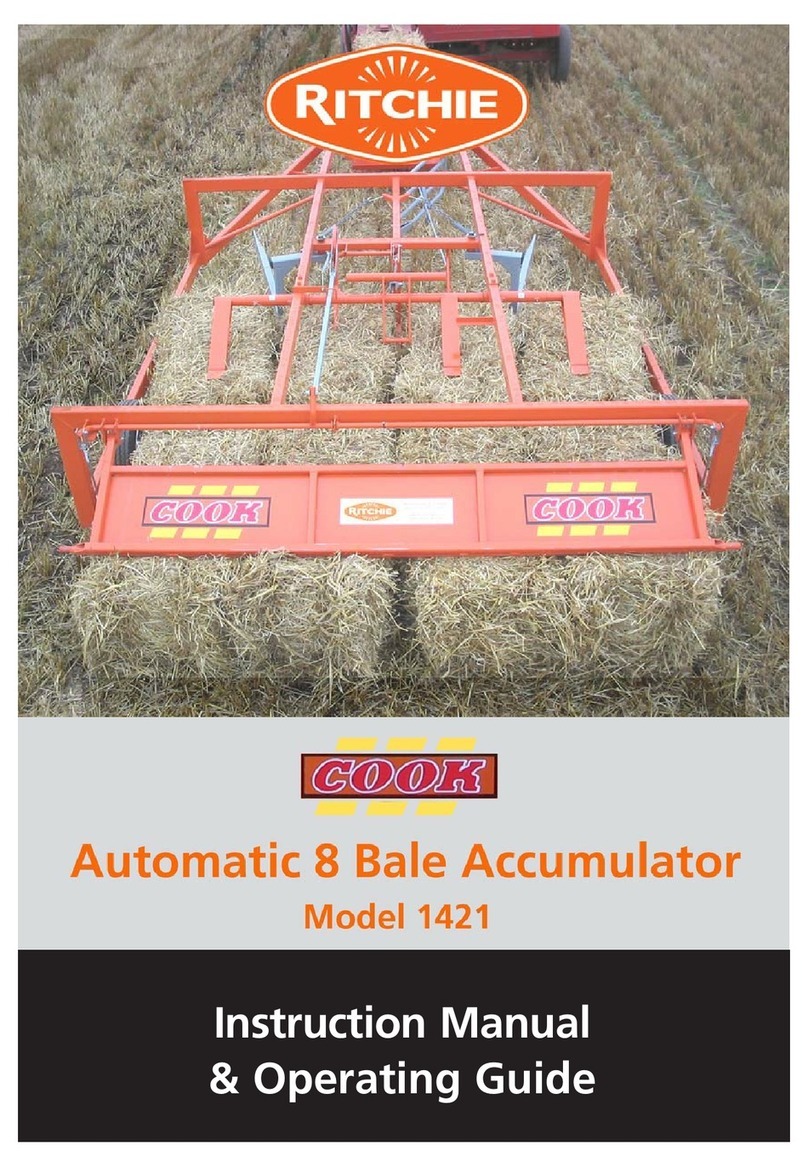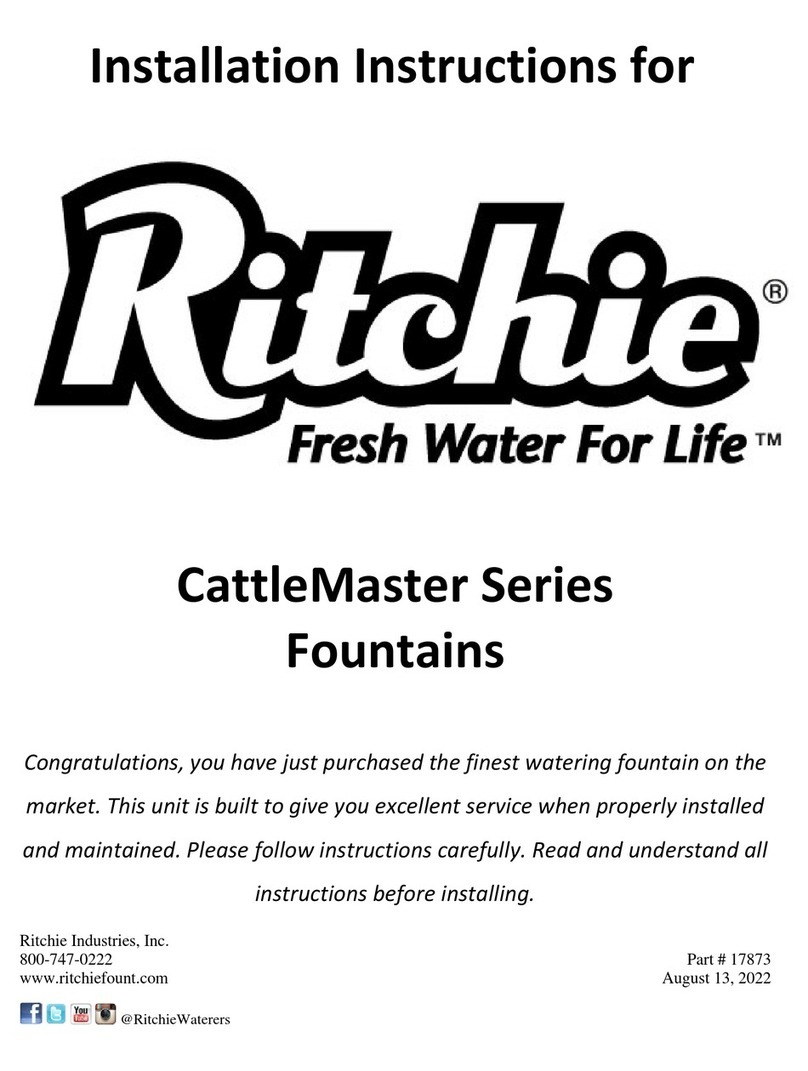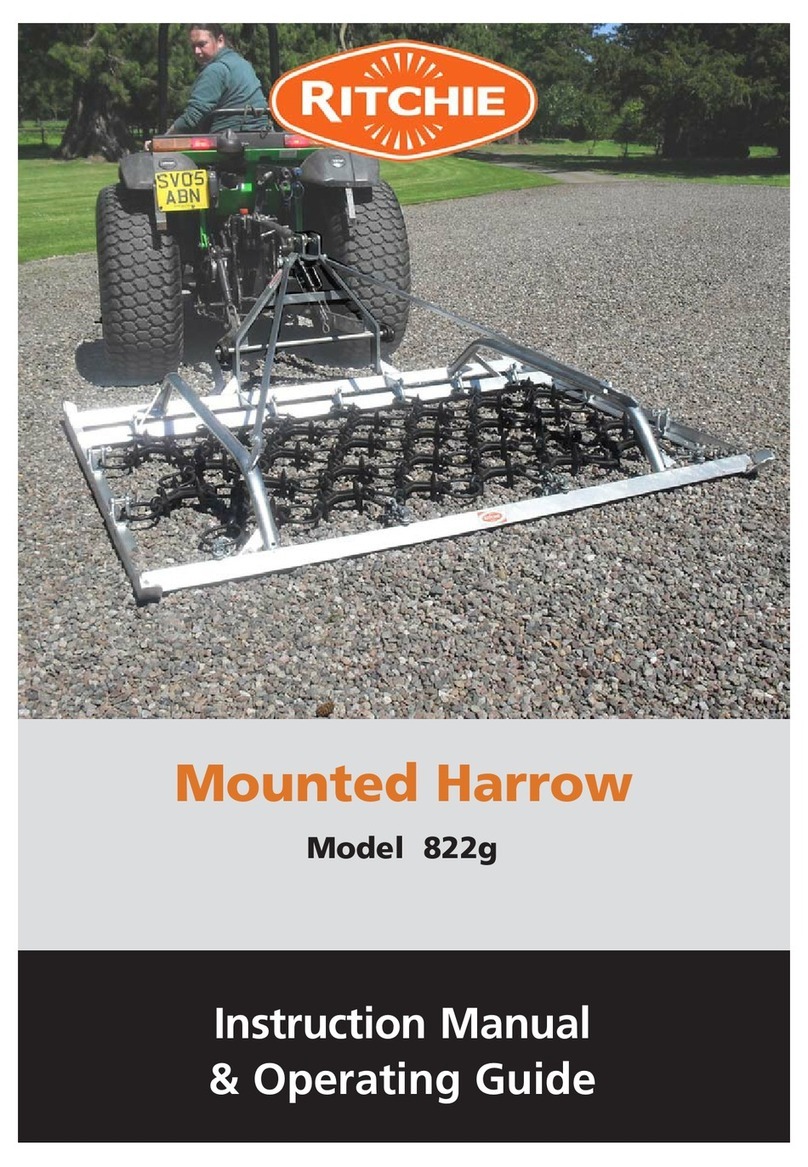
Safety Information
Please read these instructions carefully.
Ignoring these instructions could result
in personal injury or damage to the
machine.
These instructions apply to all personnel
involved with the operation, maintenance and
servicing of the machine.
General
The machine must only be used by an
experienced, competent operator who has
been trained to use the machine.
The operator should consult the tractor
handbook, and Baler Instruction book for
information and instruction on safety issues.
Only operate this machine from the tractor
seat (work station).
Never allow personnel to ride on the machine,
either on the road or in the field.
Do not modify any part of the machine unless
modifications or additions are approved by the
manufacturer. This also applies to welding
work.
Do not use the machine if a malfunction
occurs as this could result in damage to the
machine.
Warn bystanders to keep clear of the machine
whilst operational.
Hay and Straw are flammable - so always keep
the machine in a clean condition away from
open fires and smoking materials.
Keep a fire extinguisher in the tractor cab!
Before and During Operation
Never leave the tractor cab while the
engine is running. Always switch off and
remove the ignition key and apply the
tractor handbrake.
Take particular care when mounting the
implement to the Bale Chamber. Always
position the machine on flat level concrete or
tarmac.
Never work on ground exceeding 8° in
inclination.
6
Transportation and Storage
Before travelling on public roads ensure the
machine is free of loose material and
equipment.
Move the Drawbar from the centre (working
position) to the side attachment point (road
transport position, page 11).
Secure the rear door by fitting the bolt and
wing nut as described on page 12, and fold
the rear section into the road transportation
position.
Road speed should not exceed 20 mph
(30 km/h).
When turning or at bends take the width and
length of the machine into consideration.
Take extra care when reversing the machine.
When stopped, always use the parking brake.
When storing the machine- clean thoroughly.
Position the machine on flat level concrete or
tarmac where it presents no hazard to people
or animals.
































